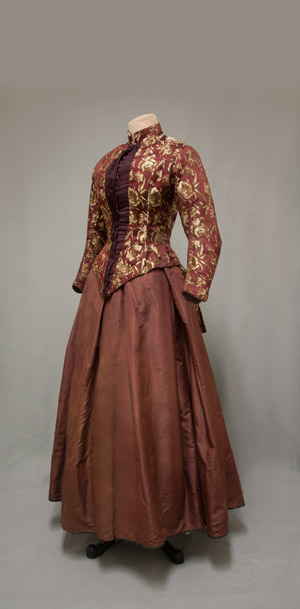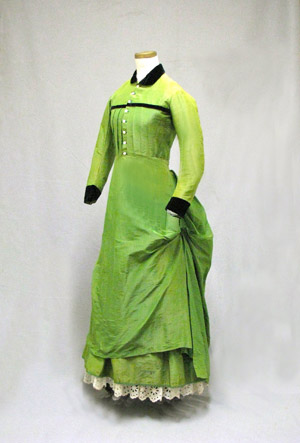
January 17-March 11, 2012
As a land-grant university, the University of Connecticut has a long history of acquiring and preserving garments and textiles pertinent to the history of the State of Connecticut. Since 1898, when the Home Economics Department was created, many talented professors and students have worked to amass over 8,000 items, 3,500 of which are garments, making the University’s Historical Clothing and Textile Collection the largest such study collection in New England.
Cloth-making in New England had long been the responsibility of women who were central to the region’s industrial transformationas domestic producers of clothing; as workers in the textile and shoe industries; and as consumers and wearers of clothing and fashions. While Boston, New York, and other urban centers supplied capital, manufacturers seeking skilled labor and water-power established textile mills across rural New England, bolstering the economies of Mansfield, Manchester and Willimantic, Connecticut and scores of other settlements.
At the same time Isaac Singer began a revolution in home sewing for women with his design of an affordable sewing machine with interchangeable parts. Singer’s sales jumped from 2,564 machines in 1856 to 13,000 by 1860. Women all over New England honed their sewing skills by making Civil War uniforms on their home machines. In 1866 after the end of the Civil War, Ebenezer Butterick began producing patterns for women’s fashions in various sizes. Suddenly women, even in the modest townships of New England, could create the latest styles from New York and Paris.
This comprehensive exhibition displays fifty exceptional garments that express the development of women’s clothing in New England in the latter half of the 19th century.
Guest curator: Laura Crow, Director of Costume Design, Department of Dramatic Arts and Curator, University of Connecticut Historical Clothing and Textile Collection.

